This is a follow-up to an earlier interview with Andy Hind. I first met Andy during a trip to England in September 2011 to visit some top breeders. While Andy is an Intermediate now I was extremely impressed with his overall knowledge and what he has achieved blending bloodlines like Mannes, Lutolf and Huxley & Marchant to create a distinctive look in his stud.
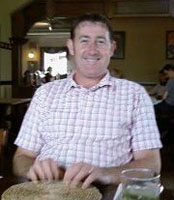
Andy, I recall you started with exhibition budgies back in 2005, then a couple of years later sold all but a handful of cocks and started over. Why did you do this?
I soon realized I made the error of buying stock from here there and everywhere, so I sold 160 plus birds and kept just the 7 best cocks, and began to search for a batch of related birds from the same source.
Why did you select John Copeland to work with for the new bloodline you planned to focus on?
I had visited John a number of times during this period. He had acquired stock from Jo Mannes and I was very attracted to the Mannes bird straight away.
What was it that you liked about the Mannes birds?
I love the density of feather and the way Jo has built his stud by studying the finer points and developing those pussycat faced birds.
How did you use the youngsters you bought from John Copeland during the first couple of years?
Luckily for me I acquired 11 birds, 7 hens and 4 cocks all being brothers and sisters. They all came off a df white spangle cock and a cinnamon grey dominant pied hen. Both parents were Mannes rung so I knew the 11 birds were 100% Jo's bloodline. All these birds were blue series spangles and spangle pieds. The best 7 cocks I kept were paired to the 7 hens and luckily they all bred and reared youngsters. The 7 cocks were then moved on. Now I had the beginnings of a stud as every bird in the birdroom was related. It was when I started pairing the related birds back together I was producing better youngsters.
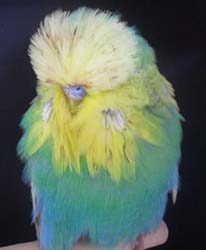
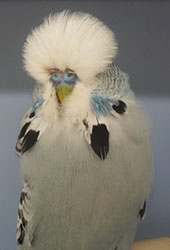
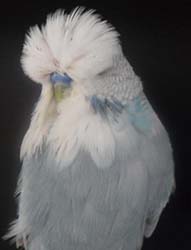
What other birds have you bought in that have had major influences on your stud?
I do try to bring in a few birds each year to try and improve certain features. A skyblue cock from Trevor Wilcox made a big impact on the stud, as did a Dave Brick rung yellowface skyblue hen that was acquired from a friend.
There was also a df yellow spangle cock from Terry Jukes which was related to my spangle line via a hen from John Copeland. This bird really did breed well and the youngsters were mostly keepers.
I have since developed a line of normals and cinnamons from a 2006 Daniel Lutolf rung skyblue cock. This family of birds is making nice progress going into the third year of breeding. The skyblue has also been used as an outcross in the spangle family.
Any other bloodlines in the background of these birds?
I feel I have created my own lines of birds now, as time has passed I have felt less need to bring in more outcrosses, The whole stud is based on Huxley & Marchant, Lutolf and Mannes bloodlines with various outcross blood used to improve certain features. I feel it is my own line now really, with the odd bird from studs using similar bloodlines used to help keep fertility and vigor in the stud.
Occasionally outcrosses are bought and they do not gel with my own stock. If this happens I move the outcross on and the youngsters from it. I sometimes keep maybe a couple of the hens to try back to my better cocks.
Your birds are starting to get a distinctive look. You seem to have successfully blended the features of some top English and European bloodlines. What are you looking for when you introduce new outcrosses?
Periodically I assess the stud and try to visualize a bird that excels in a certain feature that I am trying to improve. This is an area I really enjoy in the hobby. I try to make many aviary visits and I always keep an eye out for a bird that will help me to improve my stud somehow.
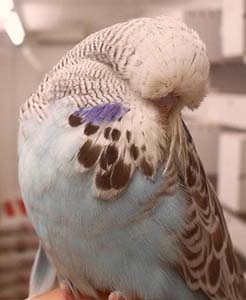
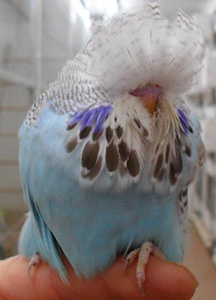
What type of pairings have produced your best youngsters? Do you pair within family/bloodline? Or go more on visual pairings?
I initially study a pair together visually then go to the record books to see if they are related. I have found cousin to cousin, nephew to auntie, uncle to niece, very good pairings in producing quality youngsters. One pairing I really like to use is grandparent to grandchild but they must be visually very good and fault free before this pairing is made.
What feature or features are you focusing on right now?
Now the stud is two separate families I find I can use a bird from each side as both families excel in all features. I have swapped a few birds with my good friend Nigel Darley recently as Nigel’s birds excel in deportment and backline, a feature which is sadly overlooked. I feel a good bird must have that swanky stylish look as well as having all the other desirable features.
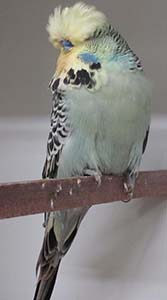
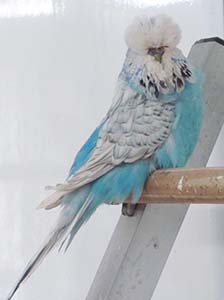
I don’t see any tail-less wonders or birds with missing flights here. Have you ever had any problems with feathers in the past? What have you done to correct it?
We all breed a few tailess/missing flight birds from time to time. I will use these birds if they have good features otherwise, but it is vital to keep good records and try not to double up on such problems.
Do you get any feather dusters?
Funny enough I bred my first dusters this year (2012), four of them. I feel it is just bad luck and not genetically passed on. I hear there has been lots of them bred this year all over the UK for some reason?
Andy. The times I have visited there are always plenty of fertile eggs, chicks and barheads. What have you done to maintain fertility in your birds? And, what advice would you give others who have challenges getting chicks from their better pairs?
Firstly a good feeding regime is vital. Get the best seed and softfood you can afford. Plenty of fresh air coming into the birdroom is important also. Regular outcrossing helps to maintain fertility as well.
What was, or is, the hardest thing you found to “fix” or change in your birds?
I have found deportment and backline hard to improve, also directional feather is a difficult feature to fix and hard to maintain in the stud.
What do you feed your birds?
A variety of seeds are fed to my stock. Plain canary, white millet, Japanese millet, oats, black sunflower, budgie tonic seed and soaked/washed millet sprays.
Softfood is grated carrot, brocholi, beetroot, fennel, celeriac, dried herbs, orlux eggfood , mealworms and gammarus shrimps and groats.
Oystershell grit, charcoal, iodine pink powder, Osmonds ultimate and pigeon picpots are always available.
Do make any changes or give anything extra approaching and during the breeding season?
No, a good balanced diet is provided all year round.
Do you give any supplements in the drinking water?
No, just fresh water.
What are your favorite varieties and colors?
I love dilutes, Texas clearbodies, but more importantly good budgies. These rarer varieties will be a feature of my stud soon as I have worked on getting good birds first.
What is the best stud of birds you have seen in your travels?
Has to be Alan Marchant’s stud… uniformity, size and quality and a credit to him.
Which mentors have been the most influential?
Alan Marchant has been great taking the time to explain and help with any questions I had. Also Harry Hockaday, and Frank Silva. I only met Bill Ruthven from Sheffield once but I learned so much in the few hours I spent with him. A true gentleman and a sad loss to the fancy.
What is your favorite aspect of the hobby? Why?
It has to be the breeding side of the hobby. Nothing beats the thrill of watching youngsters develop in the nestboxes from the best pairs.
What do you consider the biggest challenge facing the hobby today, both here in the UK and Worldwide?
I feel the politics and the power struggles in the hobby are not helping anybody nowadays. I feel this in turn affects benched entries at shows. We must remember it is a hobby and should stand united in this rather than causing friction.
